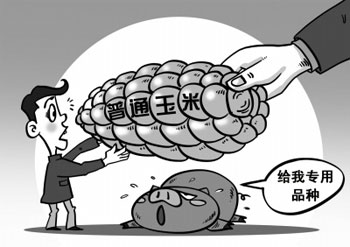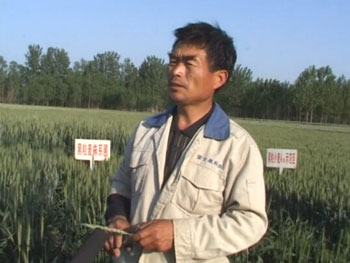Super El Nino is strong in flood and weak in drought this summer
Original title: will it be "extremely hot with rain and waterlogging" this summer?

On May 21, the Xiaoshui River in Dao County, Yongzhou, Hunan Province, exceeded the warning water level by 2 meters. (photo by he Hongfu, Xinhua News Agency)
According to the analysis of the meteorological department, due to the influence of the super El Ni ñ o, which will continue to decline, there may be heavy flooding this summer. Will there be another "extraordinary heat of rain and waterlogging"? What should we pay attention to in agriculture? On May 21, this reporter interviewed Huang Zhimin, a senior agrometeorological engineer and an expert who enjoys the special allowance of the State Council government.
Huang Zhimin said: if you look up the meteorological data, you will find that from January to early May this year, the temperature in some areas of the middle and lower reaches of the Yangtze River remained on the high side. In Jingzhou City, which is located in the middle reaches of the Yangtze River, in the ten-day average temperature, except that in late January, it is lower than that in the same period of previous years, and the rest of December is higher than that in the same period of previous years. This is unique since there were formal meteorological records in 1954. In 2004, which is only similar to it, the ten-day potential distribution of temperature was basically the same in late April and before, but it began to be 1.4 ℃ lower in the first ten days of May. The accumulated temperature of the daily average temperature from January 1 to May 10 this year reached 1536.8 ℃, which was 122.6 ℃ higher than that of the same period in previous years, which shows that both the high temperature and the accumulated temperature are the highest in this year.
The occurrence of the above-mentioned "low probability events" should be caused by global warming. The temperature in this area continues to be on the high side from January to early May this year, which covers the rapid warming of winter and spring, which will correspondingly increase the content of water vapor in the air, and the continuous heavy precipitation in some parts of the south in April. Of course, it is also the result of the joint action with the cold air from the north to the south.
So will these extreme conditions have any adverse effects on the weather this summer?
In terms of the characteristics and laws of historical weather and climate change, there are the characteristics of monsoon climate in the same season of rain and heat in summer, and the general law of quantitative change to qualitative change of meteorological elements. At the same time, according to the study of Jingzhou Agricultural Meteorological Experimental Station of China Meteorological Administration, despite the warming of the world climate, the chilling injury caused by the daily average temperature of less than 23 ℃ in the middle and lower reaches of the Yangtze River has increased in recent years. For example, after the sustained high temperature from January to late April 2004, the following important agrometeorological events occurred in Jingzhou:
First, the "mango seed cold" with a daily average temperature lower than 22 ℃ for 4 consecutive days appeared at the booting stage of early rice in June, which was easy to cause some pollen sterility and lead to the decrease of seed setting rate.
Second, in the flowering stage of mid-summer rice in August, the daily average temperature was lower than 23 ℃ for 4 consecutive days, which was easy to cause poor pollination and fertilization and lower seed setting rate, and the shedding rate of buds and bolls would be increased due to overcast and rain chilling injury of cotton.
Third, the reason for the above cold injury is that there is obviously more precipitation from June to August, in which the precipitation in June and August is more than 200mm, and there are many torrential rains that reach more than 50mm.
Coincidentally, the above analysis is consistent with the view that waterlogging is heavier than drought this year, affected by the super El Ni ñ o, which will continue to decline. Therefore, this year, we should not only strengthen the prevention of serious flood disasters, but also prevent the low temperature chilling injury of early and middle rice and cotton, rice planthopper, sheath blight, rice blast, wilt and other disasters that are easy to occur in waterlogging years. (our reporter Liu Zhiwei)
Related
- A course of planting techniques and methods on how to grow carrots
- How to plant the latest tulips?
- Is it better to pick tea in the morning or in the afternoon? When is the best time for tea to be picked? what is the third or fifth tea?
- Launch Yuanxiao Happy combination Haocha + Tea Yuan healthy Taste
- Penghu Tourism "Fireworks 20 Parade with You"
- 2022 West Lake Happiness holds "Digital Revitalization Voucher" and draws iphone13 and laptop.
- Banqiao Fuzhou social houses are designed to change start-up combined with police elimination to create a safe and livable environment
- The convenient measure of "mechanical weeding" in Xinbei has been abused and the Agriculture Bureau has imposed heavy penalties on the illegal land consolidation.
- Changgeng University Joins Hands with Four Memory Factories to Rescue Memory Talent Shortage
- The list of Taiwan's top 100 MVP managers is listed by the Director-General of the Farmers' Association of Sanxia District.



